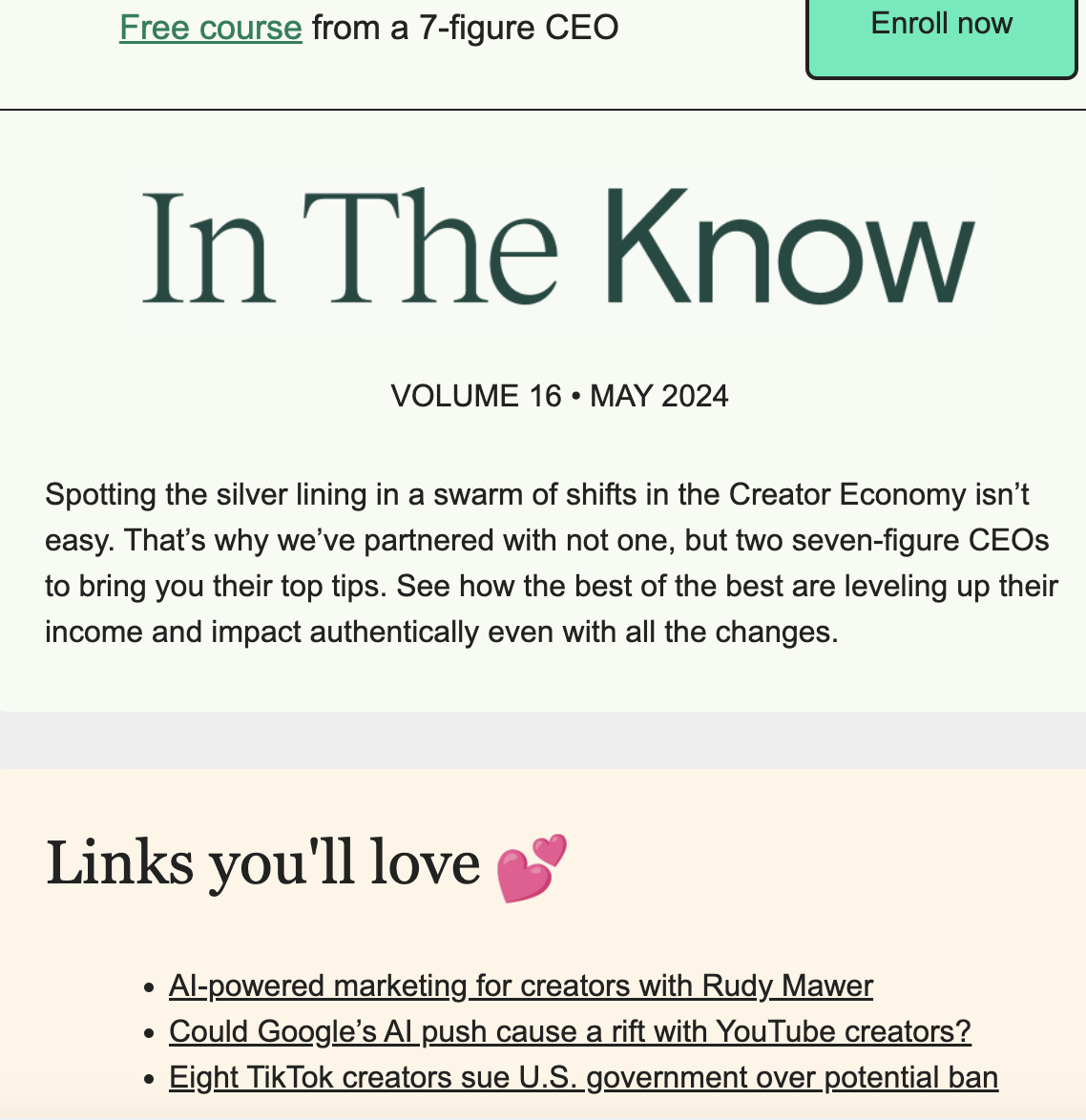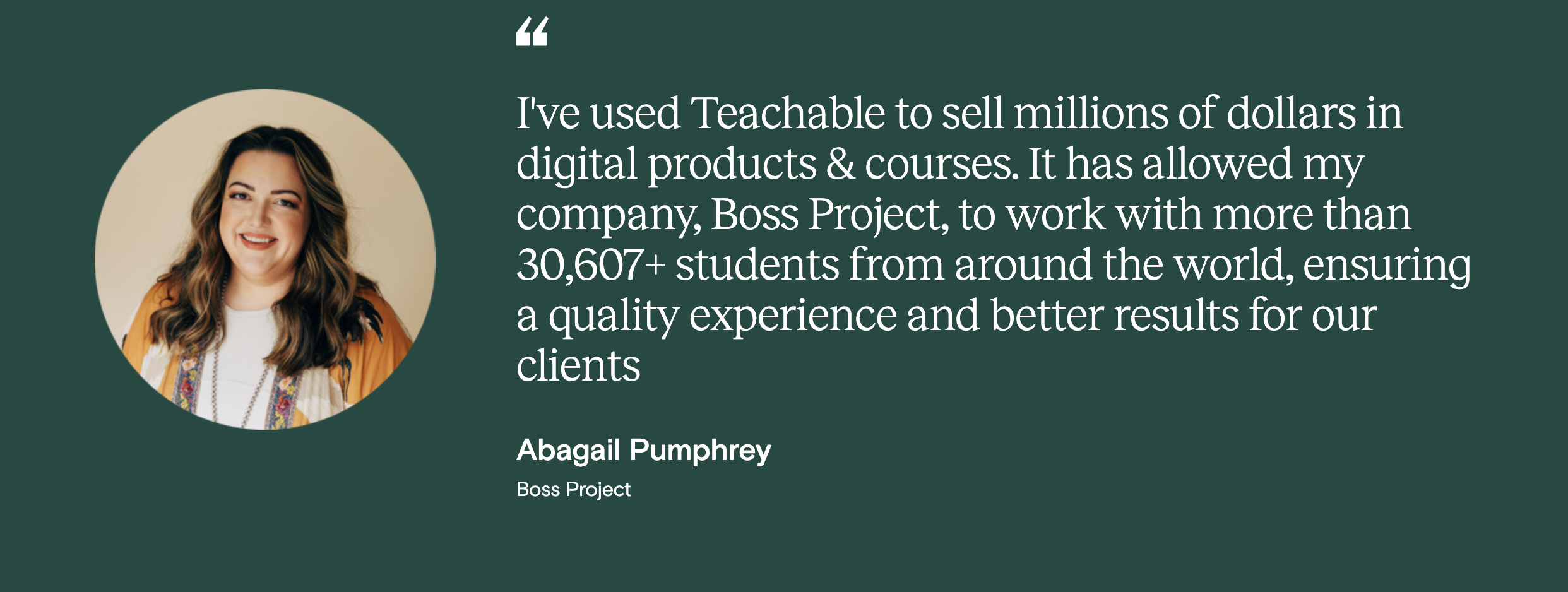When it comes to digital product and online course marketing, the process for maximizing digital sales is cyclical, not linear. Meaning, it’s not a step-by-step process you will do once and forget about. Unlike passive income, where you can “set it and forget it,” maximizing digital product revenue requires revisiting often.
The good and bad news: There is not a one-size-fits-all model for how to go about this. Rather, it requires a unique combination of strategies determined by what your product is, who your audience is, market conditions, and more. The good news: We have seven approaches you can take no matter what you’re selling. Adapt them to your own business to evolve your earning potential. Learn how to boost sales and generate more income from your online courses, e-books, and templates with these seven steps.
Identify your target audience and niche
For online course marketing and more, understanding who your target audience is key to delivering them quality content they’ll be excited to buy—ideally again and again. Before you determine your target audience, consider where there might already be a demand. Is there a demographic that is already interested in your content or products? Focus on the people you can best serve (or are already serving), and consider how you can serve them even better by determining their wants, needs, and desires. This can be done by asking for feedback from existing or intended customers, analyzing customer data already at your disposal, and conducting your own market research.
Once you’ve done your homework, you can narrow a broad market group down to a specific niche. This involves getting even more specific about who your audience is, beyond just their demographics and preferences. Want to learn more about identifying your niche? Check out this blog post.
Why is this so underrated?
Many creator businesses underestimate the power of truly understanding their target audience because it seems like common sense, yet they often rely on broad assumptions rather than deep insights. This oversight can lead to generic marketing strategies that fail to resonate on a personal level, missing out on significant revenue potential. Additionally, the process of gathering detailed customer feedback and conducting thorough market research is time-consuming and requires effort, which many companies are reluctant to invest. However, those who do take the time to intimately know their audience can create highly targeted and compelling content that drives repeat purchases and fosters brand loyalty.
Create high-quality, valuable content
This brings us to our next step: As you consider who your audience is and how you can best serve them, you can start to design and create valuable content they truly want and can benefit from. Do your products solve a problem or satisfy a need? Once you know how they will bring value to your customers, you can build accordingly. Create products that are high-quality and user-friendly. Even if this takes more time, energy, and resources, it will help you build trust among your audience and encourage repeat purchases, organic referrals, word-of-mouth marketing, etc. to maximize digital sales and sustain your business.
Why is this so underrated?
Some creators undervalue the impact of creating high-quality content because they are often focused on quick wins and immediate sales rather than long-term growth. The pressure to produce content rapidly can lead to a compromise on quality, which ultimately undermines customer trust and satisfaction. Furthermore, high-quality content requires a significant investment in terms of time, creativity, and resources, which many companies are hesitant to commit. However, those who prioritize quality over quantity can differentiate themselves in a crowded market, leading to increased customer loyalty, higher conversion rates, and sustained revenue growth through repeat purchases and positive word-of-mouth.
{{firstdigital-component="/blog-shortcodes/blog-popup"}}
Develop a strong marketing strategy
Before we get into effective marketing, you’ll need to price your product. Pricing too low may cause customers to undervalue your product, while pricing too high can lose your audience that feels it’s not within their budget. Find a sweet spot based on the time and energy it took to create the product, production costs, etc., that honors your creativity and ingenuity, while being competitive with similar products on the market. You can always lower prices through seasonal promotions, but it can be harder to raise your prices once they’ve been set.
Once you have the numbers set, it’s time to plan your digital product or online course marketing strategy. Leverage different marketing channels that feel aligned to you (in other words, what you know you’ll communicate regularly, consistently, and comfortably on) and your product. This will increase your visibility and attract potential customers to your product.
Why is this so underrated?
Many businesses overlook the importance of a strong marketing strategy because they assume a great product will sell itself. This can lead to missed opportunities and disappointing sales. The process of crafting a comprehensive marketing plan—balancing pricing, selecting channels, and maintaining consistent communication—requires a strategic approach and ongoing effort, which some find daunting. Without a targeted marketing strategy, even the best products can get lost in the crowded digital marketplace. By investing in a well-thought-out marketing plan, businesses can boost visibility, attract more customers, and ultimately increase sales and revenue.
Leverage email marketing for promotion
Once you have your product and marketing in plan in place, utilize your email lists to communicate the value of your product. With all marketing channels, you have a limited time to hold your audience’s attention. People are inundated with work and marketing emails daily, and attention spans are more limited than ever. Grab attention with a subject line that speaks directly to your target audience.
Next, tailor your email communications based on your relationship with your audience—how they would want to hear from you. Perhaps you position yourself as a trusted friend, the authority on a certain subject, etc. You might write them in letter format in a newsletter, whereas on other marketing channels you would grab their attention in a different way.
Finally, show don’t tell: Rather than simply telling them what the product is, explain why it’s important and how it will impact their lives. Highlight unique benefits relevant to them, and always circle back to your call to action (CTA)—the action you want the customer to take to achieve your goal of maximizing digital sales.

Why is this so underrated?
Email marketing often flies under the radar because many businesses see it as outdated compared to newer digital platforms. There’s a misconception that social media or other channels are more effective, leading to underutilization of email’s direct and personal approach. Crafting impactful email campaigns requires careful planning and personalization, which can seem daunting. However, when done right, email marketing can build stronger relationships with your audience, leading to higher engagement, trust, and more sales.
Utilize social proof and testimonials
You can establish credibility and continue building trust through social proof—the psychological idea that customer decision-making is influenced by others. Simply put, if others give your product(s) their stamps of approval, others are more likely to follow suit. This can be achieved by displaying testimonials, media mentions, numbers and ratings, and more on your product landing page and within your marketing channels.
Choose a range of testimonials that highlight various benefits—not just praising the product but why and how it provided value. It can also be helpful to include credibility boosters, such as the reviewer’s name, title, company name, and even photo.
The more you can communicate how tried and true your product is, the higher your conversion rate and digital product revenue will be.

Why is this so underrated?
Many creators and digital business owners overlook social proof because they often focus on their content and product features instead. This can lead to missed opportunities for building trust with potential customers. Collecting and showcasing authentic testimonials can seem time-consuming, but it's a powerful way to demonstrate the real-world impact of your product. By sharing genuine customer experiences, you can enhance your credibility and make it easier for new customers to feel confident in their purchasing decisions, thereby increasing your conversion rates and sales.
Offer upsells and bundle deals
To maximize digital sales, you can consider relevant products to recommend to your customers through upsells and bundle deals. As a reminder, an upsell is an opportunity to encourage customers to upgrade or make an additional purchase. This could be additional products or add-ons, or upgrading for access to premium features. Bundles take it a step further, offering an incentive to buy multiple products at a time. This could be as simple as “people also bought” recommendations, a promotion where you have to buy a certain number to receive a discount, or bundling products together for a specific reason.
Why is this so underrated?
Upsells and bundle deals can be powerful tools that business owners selling digital products tend to overlook. Don't miss out on valuable opportunities for increasing profitability by only focusing on the initial sale. The idea of suggesting additional products or creating bundle offers may seem daunting or even unnecessary to some. However, by taking advantage of these strategies, digital product businesses can not only increase their earnings but also provide added value and convenience to their customers, enhancing their overall experience.
Continuously analyze and optimize your approach
As with many things in life, it’s important to reflect on this product cycle and evaluate what’s working and what isn’t. This is where revisiting the process, as we mentioned at the beginning of this article, comes into play. Consider how you can consistently improve your digital products and retain your customers.
For both, customer feedback can be really valuable for adapting your strategies to meet their wants and needs. In addition to feedback, provide your customers with excellent service and support and continue to engage them through your marketing channels. Other ways to improve your offerings include monitoring metrics and continuing to do your market research. Use this information to enhance or shift if need be.
Ultimately, optimization through evaluation is key for maximizing your digital product sales.
Why is this so underrated?
Regular reflection and evaluation are essential for growth and success. By revisiting and refining your processes, you can identify areas for improvement and adapt to meet the changing needs of your customers. Embracing customer feedback, providing excellent service, and staying engaged through marketing channels are important steps in this ongoing optimization journey. Understanding and using metrics and market research allows you to make informed decisions and stay ahead of the curve. Prioritizing optimization through consistent evaluation can really help in your quest to maximize digital product sales and revenue and sustain long-term success in the creator economy.
{{firstdigital-component="/blog-shortcodes/blog-popup"}}
Wrap up
We’ve discussed why maximizing digital sales is not a linear, one-time process but a series of strategies you will want to come back to again and again. Before you start creating your high-value products, identify who your audience is and what they really want or need. Develop a strong marketing strategy that leverages email and social media marketing. Lean on social proof, and consider creative promotions. And finally, evaluate and repeat.
FAQs for maximizing your digital product sales and revenue
How can I increase sales of my digital products?
Increasing sales requires constantly reevaluating your products to determine how you can better serve your customers. It is not a linear, one-time process but a series of strategies you will want to come back to again and again. Before you start creating your high-value products, identify who your audience is and what they really want or need. Develop a strong marketing strategy that leverages email and social media marketing. Lean on social proof, and consider creative promotions. And finally, evaluate and repeat.
What marketing strategies work best for selling online courses?
Leverage different marketing channels, including email and social media, that feel aligned to you and your product. This will increase your visibility and attract potential customers to your product. With your niche in mind, consider targeted, content, and affiliate marketing. Leverage social proof, such as testimonials, reviews, and media mentions, to build trust, as well as limited-time promotions and offers to elicit urgency.
How do I price my digital products effectively?
Find a sweet spot based on the time and energy it took to create the product, production costs, etc., that honors your creativity and ingenuity, while being competitive with similar products on the market. Pricing too low may cause customers to undervalue your product, while pricing too high can lose your audience that feels it’s not within their budget. You can always lower prices through seasonal promotions, but it can be harder to raise your prices once they’ve been set.
What are some ways to promote my e-books and templates?
Similar to online course marketing, utilize different marketing channels, including social media and email marketing, as well as optimizing for search engines (SEO), when promoting e-books and templates.
For ebooks: Start marketing early to build anticipation. Make your ebook available on many different platforms, and encourage readers to leave a review, so it gets more traction. You might also consider collaboration with influencers to spread the word and/or offering incentives, such as bonus offerings, to people who preorder the ebook.
For templates: Templates, on the other hand, can be promoted through tutorials, comparisons, and even free samples. Consider who your templates are most suited for, and from there you might do targeted ads or collaborations with influencers relevant to your audience. If you’re just starting out, you might consider discounts, promotions, or giveaways to spread the word.
Join more than 150,000 creators who use Teachable to make a real impact and earn a real income.


